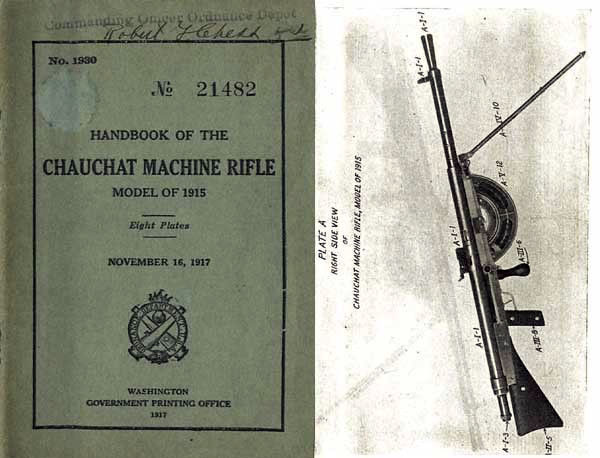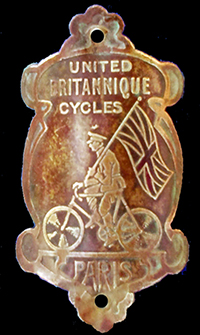
I bought this rare folding bicycle in 2017, as my Book was being prepared for printing, and just managed to get it into the chapter on folding bicycle history.
Here it is, as found after decades of storage. As you can see, it has had a later braking system added. It was obviously used as a regular bicycle throughout its life.

1896 GLADIATOR MILITARY FOLDING BICYCLE
22″ Frame
28″ Wheels
(Now sold)




1896 GLADIATOR MILITARY FOLDING BICYCLE

According to these photos from the Bibliotheque Nationale de France, Gladiator made a prototype military folding bicycle similar to Gerard and Morel’s 1895 folding bicycle that subsequently became the ‘Captain Gerard’ model manufactured by Peugeot, and used extensively by the military.
I assume that various manufacturers submitted plans to the government for the lucrative military contract. With their enormous new factory opened in 1896, Gladiator were certainly in a strong position for such a contract. However, with backing from Gerard, the Morel design was the one that was used.























CHAUCHAT MACHINE RIFLE

During WW1, the Gladiator Cycles factory in Pre-Saint-Gervais manufactured the Mitrailleur Chauchat rifle for the French and American army (seen over the soldier’s back in the picture below). It was not a reliable gun.
The Fusil Mitrailleur 1915 (CSRG stood for Chauchat Sutter Ribeyrolles Gladiator) was well ahead of its time. When finally deployed in useful numbers in the autumn of 1916, Col. Louis Chauchat’s automatic rifle delivered a level of man-portable infantry firepower that was unrivalled in any other army. The M1915 CSRG heralded a new era of automatic arms as it could be carried, loaded and fired by just one man. But the Chauchat’s story is an unfortunate one because Col. Chauchat’s ingenious design was clearly let down by manufacturing standards that could be described as nothing short of criminally negligent.
A soldier’s first glance at a Chauchat indicated that there was something wrong or, at the very least, not right. The exposed metal parts appear rough, as does the slab wood buttstock, and the entire gun looks as if it is an unorganized conglomeration of sheet metal stampings and scrap parts. The Gladiator factory in Paris (where almost all of the manufacturing was conducted) appears to have had no affinity for quality workmanship, and reports of substandard materials and improper heat treatment haunted the CSRG throughout the war. From the moment of its introduction to American troops, the Chauchat’s awkward appearance did not inspire confidence in men used to handling well-finished arms.
Introduced into combat during the height of static trench warfare, the Chauchat suffered from the prevailing outmoded tactics of the time, as well as the harsh physical environment of the Western Front. One of the Chauchat’s greatest flaws was its flimsy magazine, which had a maximum capacity of 20 rounds of 8 mm Lebel ammunition. Unfortunately, the magazine springs were not strong enough; so most Chauchat gunners “short-loaded” their magazines for increased reliability. Even worse, the magazine was almost completely open on its right side (to provide gunners with a quick view of available ammunition), and this exposed the gun and its ammunition to all the mud, slime and grime that the trenches could provide. Too, the magazine feed lips were easily bent, and the entire magazine itself could be easily crushed or deformed.
With all of those problems considered, the Chauchat was not just prone to jamming, it was almost guaranteed to jam. Canvas covers were eventually provided for the magazines, and while this helped a little, the horrible magazine design was not corrected by the end of the war. While it may seem like an easy remedy to a completely predictable problem, it was not addressed in time to make the Chauchat a more dirt-proof design, and many French and American gunners paid for that fact with their lives.*









WW1: FRENCH CIVILIAN BICYCLES


Except maybe in Paris, where cyclists were more fashion-conscious, most French cyclists did not discard their old bicycles. Many French cycles from the late 1890s were still in service at the outbreak of WW1, so were called upon to provide much needed transportation.
With German occupation, bicycles were impounded by the invaders.
In these photos you can see some machines from the turn of the century as well as a variety of manufacturers.
The sign on the train in the photo above reads ‘Batignolles’ which is near Paris. The ‘Society de Construction des Batignolles’ plant in the Avenue de Clichy produced armoured cars, gun carriages, bombs, trench mortars and other war material, and a ‘Batignolles’ mount was used by the French for their large railway guns.







* http://www.americanrifleman.org/article.php?id=13400&cat=3&sub=11












































